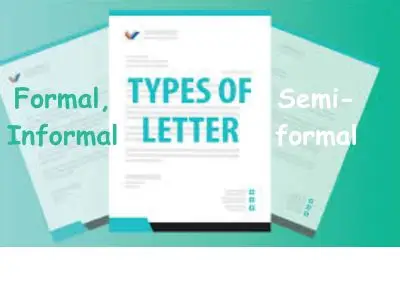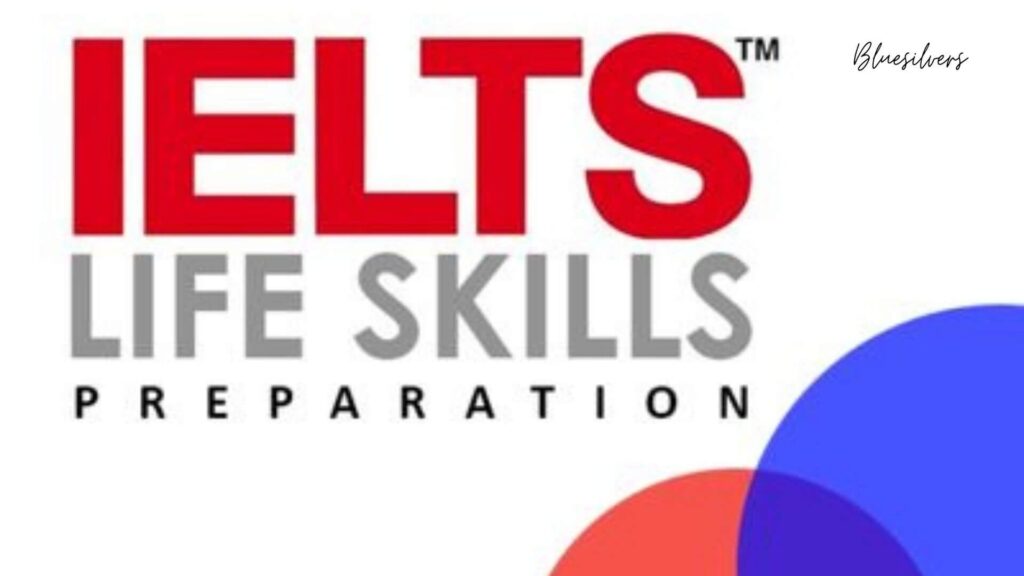How to Write a Band 9.0 IELTS Letter Writing Task
The IELTS General Writing Task 1 requires candidates to write a formal, semi-formal, or informal letter in response to a given situation. Achieving a Band 9 means your letter is perfectly written, with clear organization, an appropriate tone, and error-free grammar and vocabulary. Here’s a comprehensive guide to writing a Band 9 IELTS letter.
Table of Contents
Step-by-Step Guide to Writing a Band 9 IELTS Letter
There are three phases test-taker go through when writing the IELTS letter writing: preparation phase, writing phase, and proofreading phase
Preparation phase
- Read and understand the question
- Identify the type of letter
- Answer all the prompt questions on your question paper for paper-based test or on a sheet for computer-based test
Writing phase
- Structure the essay: introduction, body, and the conclusion
- Write the introduction – state the purpose and mention the reason for writing
- body of the letter – Write on the prompt questions
- Write the conclusion
Proofreading phase
- Take time to proofread your work
Preparation Phase
It is not advisable to start writing the letter without properly observing the first three steps: (1) understand the question (2) identify the type of letter (3) answer the prompt questions. Though for advanced writers, these steps can be skipped, however, it is crucial for beginner writers to observe these steps.

Step 1: Understanding the Task
In IELTS Writing Task 1, you will be given a scenario and asked to write a letter that achieves specific objectives, such as making a request, expressing thanks, or apologizing. The key is to understand the type of letter (formal, semi-formal, or informal) and structure your response accordingly. Understanding the task is so crucial because it can help test-takers avoid writing off-topic. What is the task about? What is the situation presented in the question? Understanding the task also requires that the test-taker presents a real circumstance that align with the situation presented in the task.
Step 2: Identify the type of letter

The IELTS letter writing are of three types: formal, informal, and semi-formal.
1. Formal
Used for:
Professional or official communication, such as writing to a manager, government official, or company.
Tone and Language:
- Polite, respectful, and impersonal.
- No contractions (e.g., write “do not” instead of “don’t”).
- Use formal expressions (e.g., “I would appreciate it if…”).
Example:
- Writing a letter of complaint or application.
- Salutation: “Dear Sir or Madam”
- Closing: “Yours faithfully”
2. Semi-Formal
Used for:
Communicating with someone you know but in a professional or neutral setting, such as a colleague or teacher.
Tone and Language:
- Polite but less rigid than formal.
- Limited use of contractions is acceptable.
- Friendly yet respectful language.
Example:
- Writing to a neighbor or a tutor.
- Salutation: “Dear [First Name]”
- Closing: “Yours sincerely”
3. Informal
Used for:
Personal communication with friends or family.
Tone and Language:
- Friendly, conversational, and casual.
- Use contractions (e.g., “I’m,” “can’t”).
- Express emotions or include personal anecdotes.
Example:
- Writing to a friend about your holiday.
- Salutation: “Dear [Name]” or even “Hi [Name]”
- Closing: “Best wishes,” “Cheers,” or “Take care.”
The tone and style depend on your relationship with the recipient and the purpose of your letter. Always align your vocabulary and tone with the situation.
Step 3: Answer all the prompt questions (Analyze the Question Prompt)

Read the task carefully to identify:

- The type of letter you need to write (formal, semi-formal, or informal).
- The purpose of the letter (e.g., complain, request, invite).
- The three bullet points provided in the task.
The prompt questions are the three questions provided and you are meant to write around the questions. You can provide brief answers in your question paper to guide you during the writing phase.
For example:
You recently stayed at a hotel and faced a problem during your stay. Write a letter to the hotel manager.
In your letter:
- Describe the problem.
- Explain how it affected your stay.
- Suggest how the hotel could improve.
From this, it’s clear you need a formal letter addressing a complaint and it is a formal letter. To answer the prompt questions, look at the diagram below
This step 3 requires
- Brainstorming ideas for each bullet point.
- Organizing your ideas logically.
- Ensuring you use relevant vocabulary and grammatical structures.
You should spend about 90 seconds or 2 minutes max in this preparation phase. As soon as you read the questions, steps 1 and 2 are already taken care of. It is only step 3 that may requires a little time.
Writing Phase

Step 4: Structure Your Letter
A Band 9 letter typically follows this structure:
- Salutation
- Formal: “Dear Sir or Madam,”
- Semi-formal: “Dear [First Name],”
- Informal: “Dear [Name or Nickname],”
- Opening Paragraph
- State the purpose of the letter clearly.
- Mention the reason for writing, referencing the scenario in the prompt.
- Body Paragraphs
- Address each bullet point in the task with detailed explanations.
- Include relevant examples or details to add clarity.
- Use linking phrases to ensure a logical flow (e.g., “Furthermore,” “As a result,” “For instance”).
- Conclusion
- Summarize your main points or restate your request.
- Politely suggest or ask for an appropriate response.
- Sign-off
- Formal: “Yours faithfully,”
- Semi-formal: “Yours sincerely,”
- Informal: “Best wishes,” or “Take care,”
Step 5: Introduction – state the purpose and the reason for writing
It is always advisable to start a formal letter by introducing yourself because the company you are writing to properly don’t know you
For example:
Dear Sir or Madam,
My name is Davis Ann and I am writing to bring to your attention an issue with a laptop that I purchased from your store on 10th December 2024. Unfortunately, it has developed a persistent problem that is hindering my ability to work efficiently.
This introduction has two parts. The first part introduces the writer and the second part (in bold) state the purpose of the letter and what actually transpired between the company and the writer.
Step 6: Write the body

Sample response:
The issue is that the laptop shuts down randomly, even when fully charged and not under heavy use. This problem began two weeks ago and has progressively worsened. I rely on this laptop for tasks such as video conferencing and data analysis, and this malfunction has caused delays in meeting deadlines and communicating with clients.
This response answers the first two prompt questions which are: state the problem with the equipment and explain how the problem is affecting your work. Each prompt question can be addressed in a paragraph, but that depends on the writer.
The issue is that the laptop shuts down randomly, even when fully charged and not under heavy use. This problem began two weeks ago and has progressively worsened.
This problem is affecting my work in several ways. First, I rely on this laptop for tasks such as video conferencing, but I have not been regular in meetings lately. Second, I use this laptop for data analysis and this malfunction has caused delays in meeting deadlines and communicating with clients.
Step 7: Conclusion
Answer the third prompt question, which is to request for help.
I kindly request that you arrange for either a repair or replacement under the warranty terms. Please let me know how to proceed with returning the product.
Thank you for your prompt attention to this matter.
Example Band 9 Letters
Formal Letter Example
Task:
You work at home and have a problem with a piece of equipment that you use for your job. Write a letter to the shop that supplied the equipment.
Response:
Dear Sir or Madam,
My name is Davis Ann and I am writing to bring to your attention an issue with a laptop that I purchased from your store on 10th December 2024. Unfortunately, it has developed a persistent problem that is hindering my ability to work efficiently.
The issue is that the laptop shuts down randomly, even when fully charged and not under heavy use. This problem began two weeks ago and has progressively worsened. I rely on this laptop for tasks such as video conferencing and data analysis, and this malfunction has caused delays in meeting deadlines and communicating with clients.
I kindly request that you arrange for either a repair or replacement under the warranty terms. Please let me know how to proceed with returning the product.
Thank you for your prompt attention to this matter.
Yours faithfully,
Davis Ann
Informal Letter Example
Task:
Write a letter to a friend about a book you recently read.
Response:
Dear Tj,
I hope you’re doing well! I recently finished reading The Midnight Library by Matt Haig, and I just had to tell you about it. It’s such an inspiring story about a woman who gets the chance to explore different versions of her life through a magical library.
I think you’d love it because it’s all about self-discovery and the choices we make. Plus, the writing is so engaging that you won’t be able to put it down!
You can find it online, or I can lend you my copy if you’re interested. Let me know if you want me to bring it over.
Take care and happy reading!
Best wishes,
Tj
Tips for a Band 9 IELTS Letter
1. Fully Address the Task
- Respond to all bullet points with sufficient detail.
- Avoid writing off-topic or leaving any part underdeveloped.
2. Write Between 150-200 Words
- Stay within the word count range; over-writing might lead to irrelevant details, and under-writing can result in a loss of marks for task achievement.
3. Use a Wide Range of Vocabulary
- Use varied and precise words appropriate to the tone and context.
- Avoid repetition by using synonyms or paraphrasing.
4. Demonstrate Grammatical Accuracy
- Use complex sentence structures, such as conditional sentences, passive voice, and relative clauses.
- Ensure punctuation is correct (e.g., commas, apostrophes, full stops).
5. Maintain a Logical Flow
- Use cohesive devices like “however,” “in addition,” “therefore,” and “moreover.”
- Ensure each paragraph transitions smoothly into the next.
6. Tailor the Tone
- Match the tone to the type of letter.
- Use polite expressions in formal letters (e.g., “I would appreciate it if you could…”).
Common Mistakes to Avoid
- Ignoring the Tone
- Writing an overly casual letter for a formal prompt.
- Overcomplicating Sentences
- Long, convoluted sentences can confuse the reader.
- Failing to Address All Bullet Points
- Leaving any point incomplete lowers your Task Achievement score.
- Repetition
- Reusing the same words or phrases unnecessarily.
- Grammar Errors
- Common mistakes include subject-verb agreement, incorrect tenses, and misuse of articles.
Conclusion
Writing a Band 9 IELTS letter requires a clear understanding of the task, an appropriate tone, and a logical structure. By addressing all bullet points, using varied vocabulary, and demonstrating grammatical accuracy, you can craft a compelling response that fulfills the assessment criteria. With consistent practice and attention to detail, you’ll be well on your way to achieving a perfect score.
The assessment is based on four criteria:
- Task Achievement (addressing all parts of the prompt effectively).
- Coherence and Cohesion (logical flow and clear organization).
- Lexical Resource (a wide range of vocabulary).
- Grammatical Range and Accuracy (varied sentence structures with minimal errors).
Please click each of these marking guide to read more about the marking schemes
For more questions on Cambridge IELTS letter writing, please check





